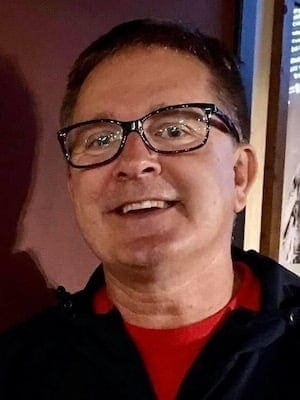I received a “galimoto” for Christmas. In case you didn’t know, a “galimoto” is a toy vehicle created out of sticks, cornstalks, wire or anything children can take into their hands and make into a thing with wheels.
Mine is a bicycle made of wire. There is a wire child in colorful cloth on the seat, and a rider whose legs pedal as the wheels move.
It is beautiful in its simplicity, astonishing in its complexity. It came from the hands of a child in Kenya. I love it.
I brought my “galimoto” to school and introduced it to my third-grade students. They held it in their hands, marveled at its design and pushed it around the classroom.
“A kid made this?” Matthew asked. “Amazing!”
We looked at a globe and located South Carolina and Kenya. We flew with our fingers from Greenville across the Atlantic Ocean to Africa and found Nairobi.
We wondered what it would be like to live there. What would the weather be like? What foods would we eat? What kind of house would we live in? What clothes would we wear? What would our school be like? What would our parents do? What would we play with?
“I know what we would play with,” said Syleana with a smile. “A galimoto!”
Next, we took a picture walk through the book “Galimoto” written by Karen Lynn Williams and illustrated by Catherine Stock.
“What do you notice when you look at the cover of the book?” I asked.
“It looks like the little boy is poor,” answered Zaniya.
“Why do you think he’s poor?” I continued.
“Well, he’s wearing a torn tank top and shorts,” she offered.
“I lived in a country called Mali in West Africa for three years,” I said. “Most of the children in my village had one set of clothes. Their parents didn’t have money to buy a lot of clothes. They had to use their money to buy food, shelter and medicine. So, maybe this boy is like the children in my village.”
“He might be poor, but look at how smart he is. Look at the truck he’s making out of wire!” exclaimed Luis, who is from El Salvador.
His parents moved here to South Carolina a few years ago. His family works hard to meet their basic needs, to make a better life here than they had in their war torn country.
Luis works slowly, speaks quietly and usually keeps his writing covered so we can’t see his struggle in putting his thoughts and feelings onto paper. He is very observant and thoughtful, though, so his exclamation didn’t surprise me.
After this, we watched LeVar Burton explore “galimotos” on “Reading Rainbow.” We saw the story come alive as the illustrations moved as Hattie Wilson spoke the words.
My students journeyed with a young boy named Kondi as he tries to collect wire to create a “galimoto,” a truck his brother counsels is much too hard for someone as young as Kondi to make.
“His brother shouldn’t tell him he can’t do it,” said Chris. “He should help him.”
“Your journals are at the table,” I said. “I want you to write a paragraph about a toy you would like to make. What would your toy be? How would you make it? Who would help you make it? Would someone play with it with you?”
I modeled a paragraph on the Promethean board and they began writing in their journals.
Zaniya wrote about making a toy puppy. Chris wrote about making a video game system.
Luis wrote about making an instrument and brought his paragraph to me for a revising conference. This is what he wrote:
I would make an instrument. I would need wood and wire to make an instrument like a cello. It might be small and broken looking but it would make beautiful music. I would play it for my friends. I would play it for Mr. Barton.
I looked at Luis.
I had hoped my lesson would help him learn about another part of our world.
I had hoped it would help him connect with Kondi, would help him see that even though he is economically poor he can create wonderful things.
I had hoped it would help him practice writing, would help him continue to learn to put his thoughts and feelings onto paper for the world to see.
“He might be poor but look how smart he is,” he had said. “It might be small and broken looking but it would make beautiful music. … I would play it for Mr. Barton,” he had written.
My poor, smart, small, broken looking student is indeed like beautiful music – beautiful in his simplicity, astonishing in his complexity.
He is like the “galimoto.” He is a gift to me and to the world.
Trevor Barton teaches second grade and is a member of First Baptist Church in Greenville, S.C.
A fourth grade public school teacher and member of First Baptist Church in Greenville, South Carolina.

